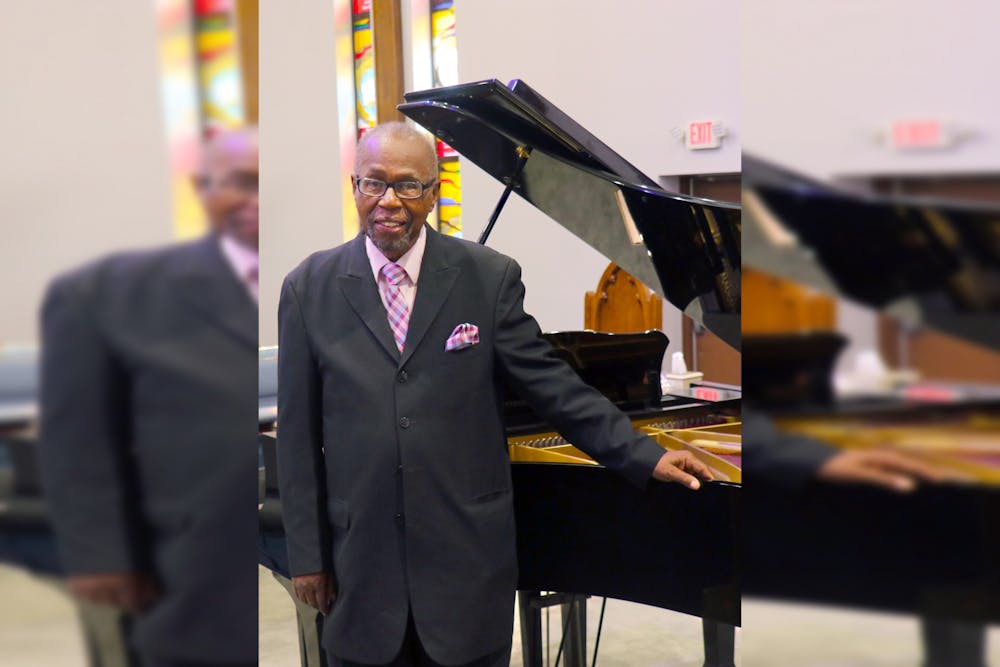Traditional Arts Indiana, a statewide folk arts program, will give Indiana senior musicians opportunities to record their own music as a result of a $25,000 grant from the National Endowment for the Arts.
Traditional Arts Indiana is a program based at IU run in conjunction with the Indiana Arts Commission, a branch of Indiana’s state government. The program began in 1998 and was launched to identify, document and promote folk and traditional arts in the state. The recently obtained grant will fund the Elder Music Recording Project, a project through which Traditional Arts Indiana will seek out older Indiana musicians and provide aid for recording and producing their traditional music through CDs and digital recordings.
Jon Kay, director of Traditional Arts Indiana, has been developing the Elder Music Recording Project for multiple years. He said the grant money is the next step in providing recording and performing opportunities for musicians across the state.
“This project has been in the works for many years and is really focused on older adults,” Kay said. “We believe the arts are a powerful tool for adults dealing with boredom, helplessness and loneliness. Whether it’s through quilt making, playing music or dancing, these are ways adults can be socially engaged in later life.”
The Elder Music Recording Project went through an initial trial in 2019 with Stephen and Nancy Dickey. Stephen, the son of renowned fiddle player Lotus Dickey for whom the Lotus Festival is named, has carried in his father’s footsteps by playing the fiddle. He and his wife Nancy, who plays the banjo, were able to record 16 professionally mastered tracks with the help of Traditional Arts Indiana. The organization helped the couple produce 1,000 CDs, which was celebrated with a release party and potluck dinner.
“We were able to give out 400 CDs that day,” Kay said. “Everybody who came wanted them for themselves, for the library, for their children, for senior centers and retirement communities.”
While the Elder Music Project is an opportunity for participating artists to share their music and preserve traditions, it also aims to deepen the connection of older adults to the world around them. The release party for Stephen and Nancy Dickey was just as much a celebration of them as it was their music, something that Traditional Arts Indiana hopes will continue for future musicians, Kay said.
“There are people all over the world just waiting for them to be asked about their stories or their music or lives,” Kay said. “As people get older, they’re threatened by invisibility, and this is how we can really raise their visibility and archive their traditions.”
Traditional musicians, particularly those of older age, have fewer avenues to explore and share their passion, according to Ross Brillhart. Brillhart is a Ph.D. Candidate in Ethnomusicology at IU and a graduate assistant at Traditional Arts Indiana.
“There is not necessarily a robust infrastructure for all traditional artists or, in this case, elder musicians who may have less access to the means of recording and reproduction of their music,” Brillhart said. “This project exists at these crossroads, at once providing the means for recording these traditions and disseminating them in such a way that positively impacts the wellbeing of other elders around the state.”
The musicians can get their music recorded by Traditional Arts Indiana as a live field recording in places that are special to the musicians, including churches, living rooms or local clubs, in a way that captures the heart and originality of the music being performed, according to Kay.
“Every artistic piece, performance, and practice becomes meaningful and expresses meaning, at least in part, because of the connections and understandings from which it was produced,” Brillhart said. “In a time where we are compelled to be physically distanced from one another, art and culture can be an incredibly powerful tool at fostering connection.”




